Jump to:
A garden already gives you the chance to get outside, enjoy the fresh air, and relax—but why stop there? Spruce it up, turn it into a Zen garden, and create a meditative space to be in harmony and at one with nature. Here are some of our favourite Zen garden decor ideas to inspire you and get you started.
Take a Break from it All in a Summer House
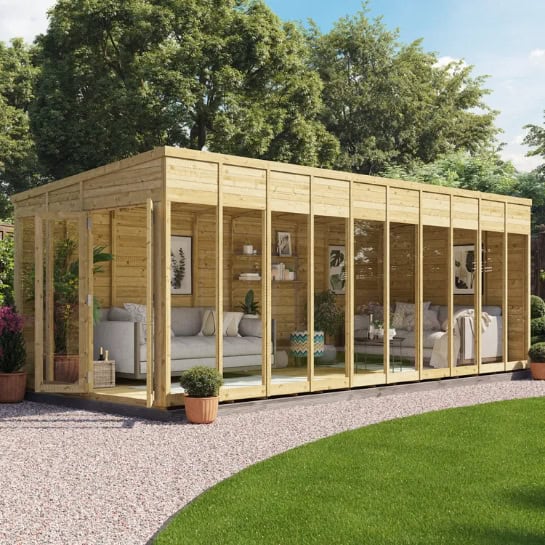
A summer house is a perfect fit for what a Zen garden needs in a meditation space. Its fully enclosed design and timber structure help block out external noise, lending itself to contemplation and peace. On top of that, most summerhouses have large windows, often floor-to-ceiling, which let you practice mindfulness while still enjoying the view outside.
A fitting example is the BillyOh Switch Pressure Treated Pent Summerhouse, with its tall windows that wrap around the building. They span around two walls, filling the room with natural light, a must in a Zen space. You can even decorate the surrounding garden with Zen elements to get the perfect view from inside, which we’ll get into next.
Garden Corner with a Dry Waterfall
A dry waterfall, also known as karetaki, is a dry landscape where a waterfall is suggested through an arrangement of stones and white sand—the only thing missing is the water. Standing bluestones also symbolise the cascade, with stones, gravel, or white sand at the foot mimicking the presence of water.
This dry landscape helps maintain the principles of balance, tranquillity, and stillness that are key in a Zen garden and practice. It also requires little upkeep, thanks to the dry stream.
Replace the Lawn with Raked Sand
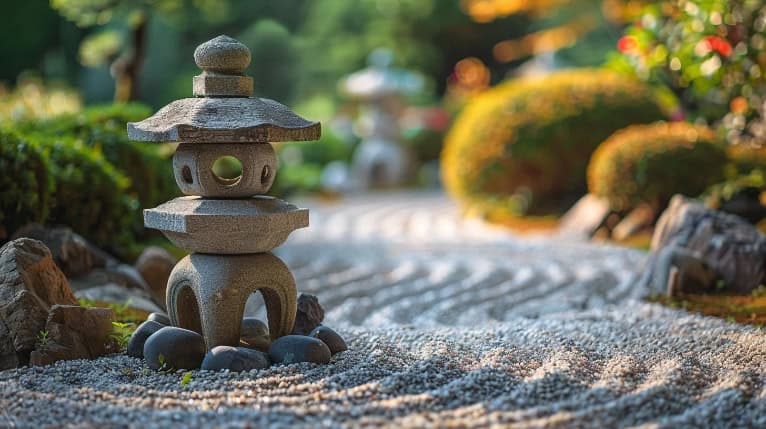
A layer of gravel or white sand is placed at the base of the dry waterfall, but you can extend this throughout your garden if you like. This element is raked to represent ripples in the water, but you can’t just use any materials to get this effect.
Fine sand and gravel are best because they’re soft and easy to walk on. Round pebbles also work well, as they’re rakeable. If you have the budget, crushed granite is a great option, commonly used by professional landscapers.
Tip: Rake circles around the larger stones to make them look like. If you can, stand on the stones and drag the rake in a circle around it. Keep going until the grooves are nice and deep. And if you need to step on your design, just be careful and step lightly so you don’t mess up the pattern.
Introduce Rock Sculptures
In a Zen garden, how you place the rocks matters. The size and shape of each one can represent different things, like a mountain, an island, or a welcoming gesture if you put it at the entrance.
Consider putting a large rock sculpture in the centre or at the back of the garden to draw attention. You could also group smaller rocks in different areas to echo natural rock formations. Stacking flat stones is another way to add interest. All in all, keep things simple and balanced when designing the space with rocks.
Moss and Evergreens to Add Colour to the Pallete
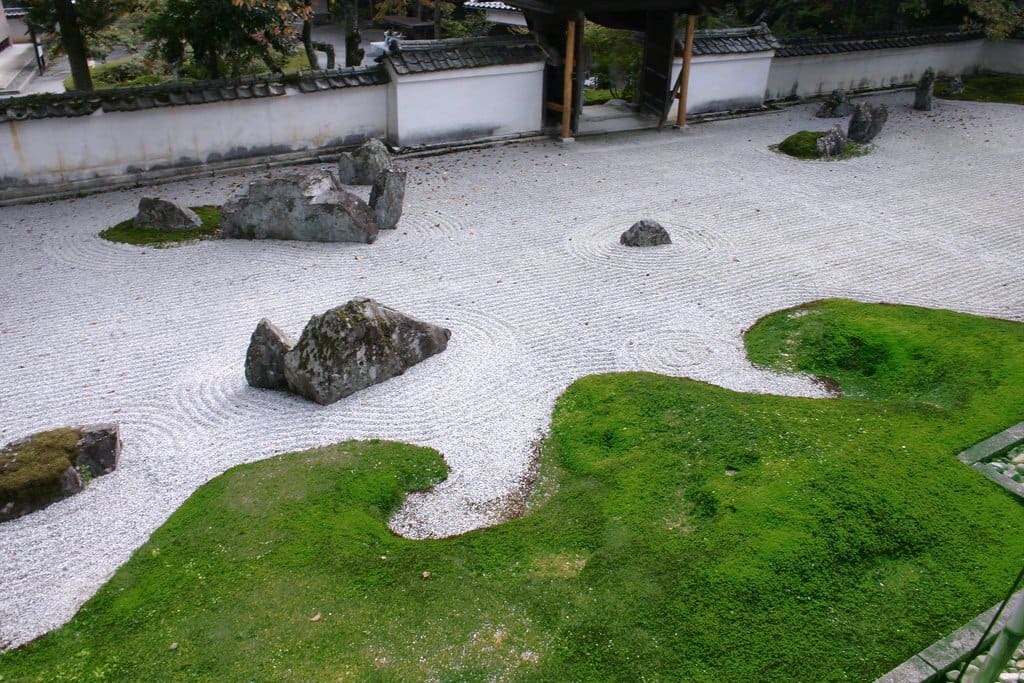
Use moss and evergreens to accentuate different parts of your Zen garden. Low-growing mounds of moss look great and provide a peaceful green contrast to the other natural elements. Evergreens, like trees and shrubs, are also perfect because they’ll keep the garden looking good all year round.
For the moss, you can choose between Acrocarps (which grow in neat, upright mounds) or Pleurocarps (which spread along the ground). As for evergreens, azaleas, rhododendrons, Japanese maple trees, conifers (like pine trees), and yew are all solid options.
Tips: Place the moss around the base of the dry waterfall or along the edges of the raked sand. If your garden has shaded spots, moss will thrive there too. For a bit of height and structure, use small trees or shrubs as a backdrop, like behind the dry waterfall.
Water Fountain for Spiritual Cleansing
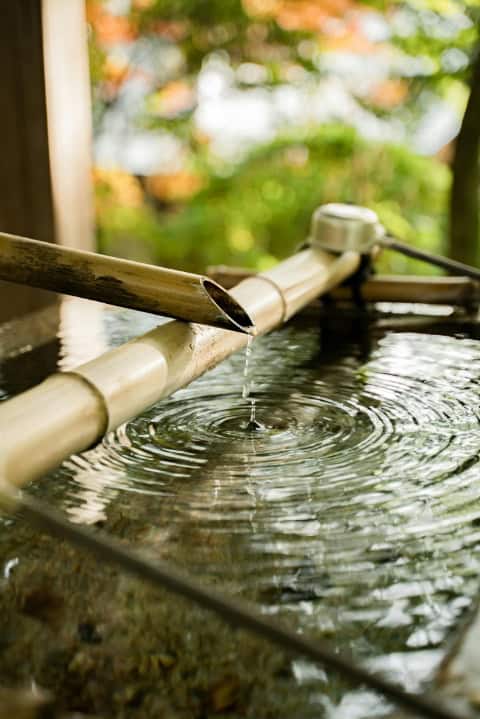
Even though Zen gardens focus on stillness, the gentle sound of trickling water won’t ruin it—in fact, it can add to the peaceful vibe. It also helps drown out background noise, making it easier to focus and relax. That’s where water features, like fountains, come in. You don’t need anything too big or flashy—just a small, simple fountain or a trickling stream will do the job.
A bamboo fountain, for instance, is a lovely choice. The natural material fits well with the rocks and plants, keeping that minimalist, organic feel. Natural stone and wood (especially untreated or reclaimed wood) also work well.
Tip: Place a garden bench near the fountain if you’ve got the space. It’s a great alternative if you can’t fit a summer house, giving you a spot to sit and enjoy the calming sound of the water and the rest of your Zen garden.
Koi Pond as a Focal Point
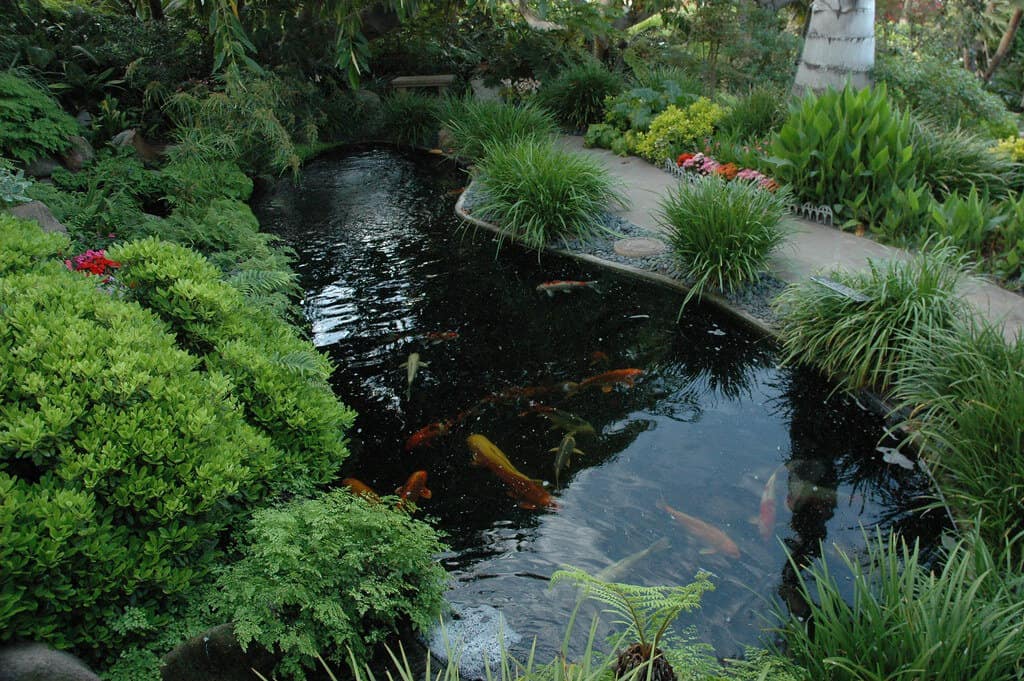
Koi fish are symbols of courage and perseverance. Bring these golden swimmers into your Zen garden by creating a pond to add meaning and beauty.
Place it in a central or prominent location where it can stand out. Frame it with natural stones, and consider adding a small fountain to make it more eye-catching. You could also add lotus flowers for drama—they represent enlightenment in Hinduism, too.
Add a Stone Path
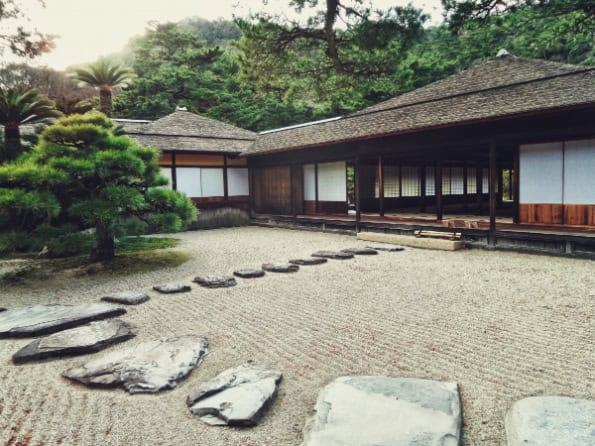
Remember our tip about being careful when walking through the raked sand to avoid ruining the pattern? Here’s a solution that will save you from having to re-rake the sand or gravel: a stone path. This gives you a designated route to walk on, and it can act as a labyrinth or a walkway that leads you to the summer house, a garden bench near the fountain, or a bridge connecting various areas of the garden.
If you’re doing this yourself, leave some space between the stones so the sand or gravel around them can still show through.
Create a Garden Bridge
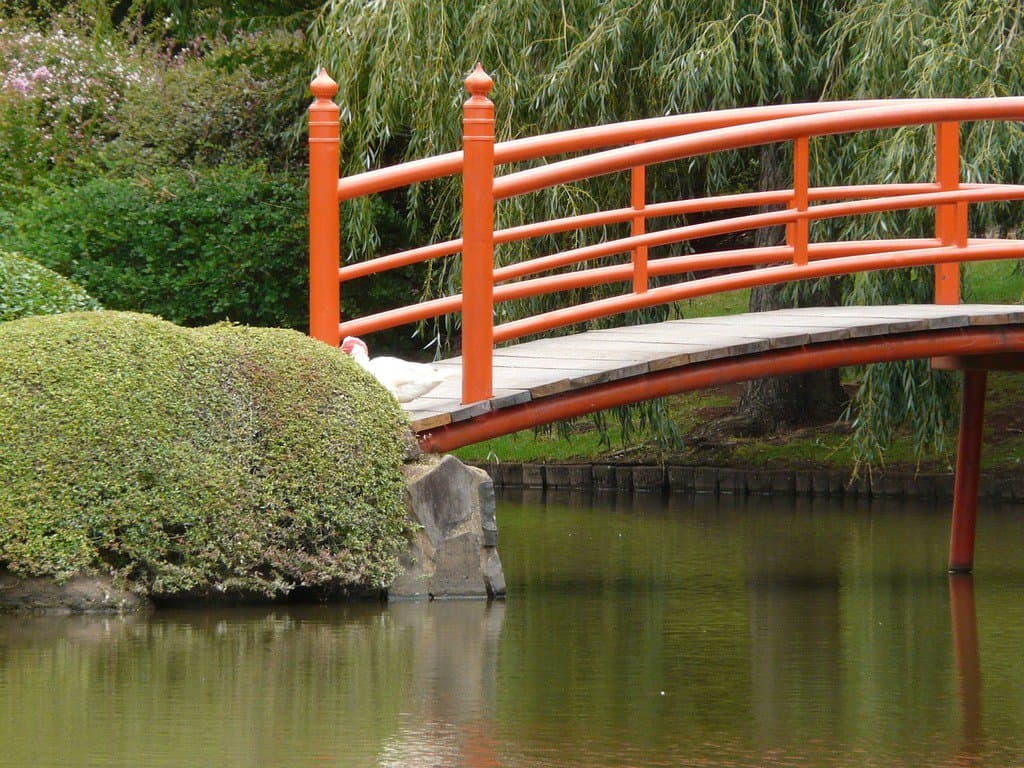
Bridges are a common feature in Zen gardens, especially in larger spaces. They offer a path to cross the water, which in Zen philosophy signifies the flow of life.
If you can, place the bridge over the koi pond so you and your guests can cross it. It’s also a great spot to feed the fish, which kids will love (just make sure to keep an eye on them). Or you could use the bridge to connect two areas, like from the sand or gravel section to a green space, or from the summer house to a bench.
Round-up
Nothing beats a summer house as your meditation space—it’s quiet and private. To extend the Zen vibe beyond the garden building, a dry waterfall is a great addition. If you can, surround the whole garden with raked sand, scatter rock sculptures around, and add moss and evergreens to bring the space to life. Be careful not to mess up your raked sand patterns with stone paths! A water fountain or Koi pond is also perfect for spiritual cleansing, and you could add a garden bench nearby or a bridge over it.





